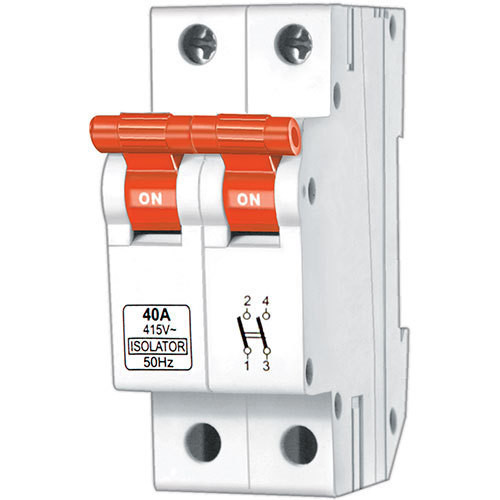ISOLATOR

The isolator is one type of switching device, and the main function of this is to make sure that a circuit is totally not triggered in order to perform the preservation. These are also recognizable like isolation switches to isolate the circuits. These switches are applicable in industrial, distribution of electrical power, etc. High voltage type isolation switches are utilized in substations for permitting isolation of equipment like transformers, circuit breakers. Usually, the disconnector switch is not proposed for circuit control but it is for isolation. Isolators are activated either automatically or manually. This article discusses an overview of what is an electrical isolator, its types, and its applications.
An electrical isolator is a switching device that prevents the flow of power through or to an existing circuit when in another path. Isolators are activated either automatically or manually. An isolator can be an individual switch, or it can control multiple switches to isolate a load circuit. High voltage type isolation switches are utilized in substations for permitting isolation of equipment like transformers, circuit breakers.
Isolators/Switches are a type of switching device that is utilized to interrupt the conductivity between two circuits when physical or electrical contact fails. An isolator circuit protects an electrical connection from the unintentional disconnection of the contact. The insulation layer protects equipment and helps maintain a high level of electrical continuity between two interconnected paths or circuits. Electrical isolateors are used for circuit protection, in substation applications, to improve safety at high voltages and keep interrupting devices from accidentally opening during normal operations.
This is mainly done by using a switch or relay, which are known as a switch or circuit breaker. Electrical isolators are used in many applications like power plants to control the flow of electricity through the substation and for various apparatus in industrial settings like factories, banks, etc.
It prevents the connection between two circuits where there is a current carrying conductive path that may cause uncommitted current. This can be caused due to a shortcircuit or overcurrent. It also checks whether there is no voltage drop across the isolating device and it can disconnect at higher rates than those of common switches when required.
PLEASE LOG ON TO www.amsing.in

